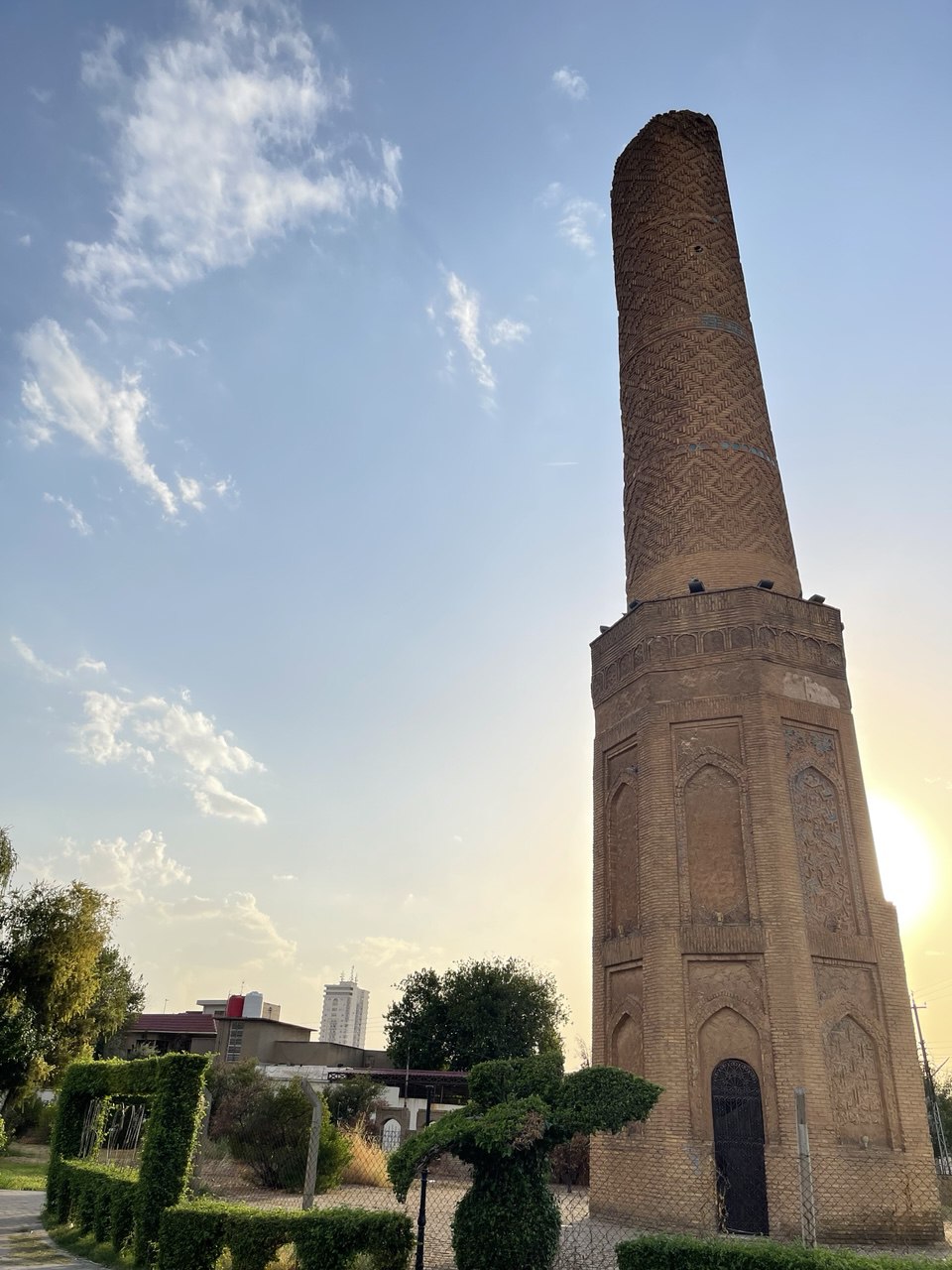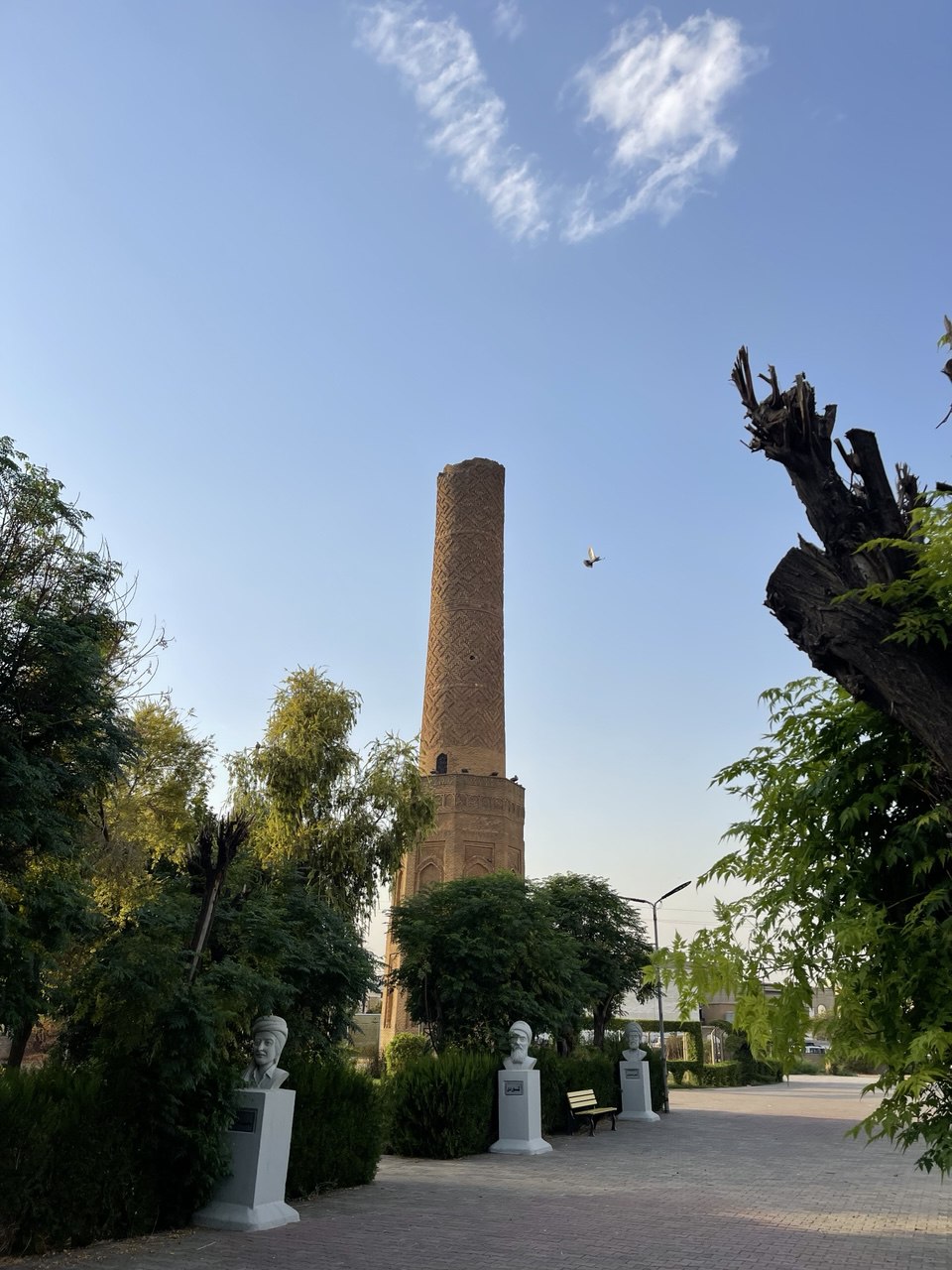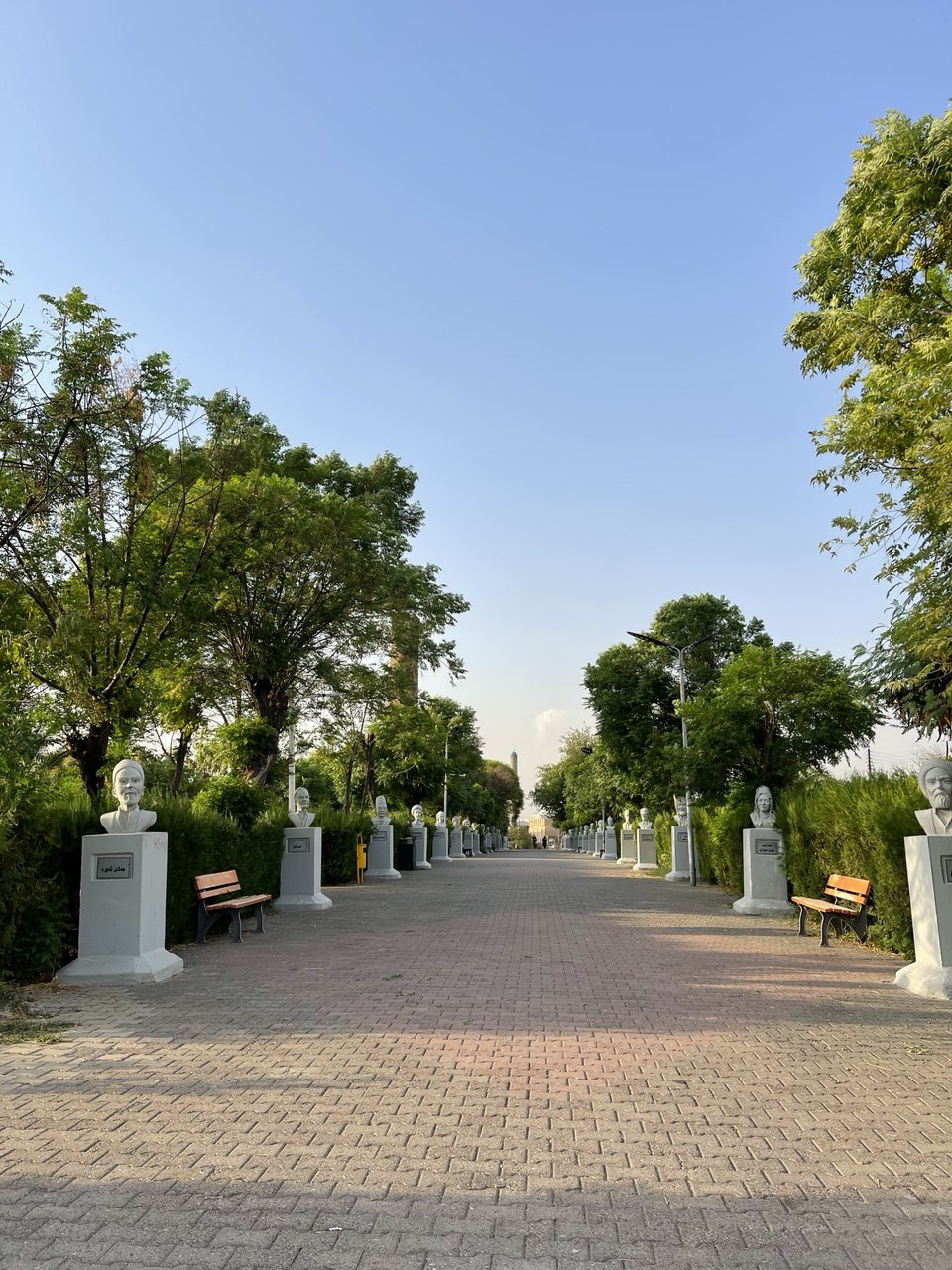


Historical Background - The Mudhafaria Minaret, also known as the Choli Minaret, was built between 1190 and 1232 AD by Muzaffar Al-Din Abu Sa'eed Al-Kawkaboori, the leading emir and general of Sultan Saladin and ruler of Erbil, during the reign of Saladin.
Structure - The minaret stands 36 meters high and features a high octagonal base and a tall cylindrical shaft. It is decorated with interlocking diagonal Hazar-Baf motifs and Kufi calligraphy.
Construction - Built from baked bricks, the minaret's base is adorned with two tiers of niches with pointed arches. The balcony parapet is carved with twenty-four small niches.
Cultural Significance - The minaret is a symbol of Erbil's historical and cultural heritage, representing the city's golden age under Sultan Muzaffar's rule.
Current State - The minaret is located in Minare Park, a public garden designed around it. It has been renovated to prevent collapse and is a popular tourist attraction.
Base and Shaft - The minaret has a high octagonal base and a tall cylindrical shaft. The base is decorated with two tiers of niches with pointed arches.
Materials - Constructed from baked bricks, the minaret features intricate designs and Kufi calligraphy.
Decorative Elements - The shaft is adorned with interlocking diagonal Hazar-Baf motifs, separated by thin bands.
Access Points - The minaret has an eastern door leading to the balcony and a small door giving access to steps inside the cylindrical shaft.
Balcony - The balcony parapet is carved with twenty-four small niches, adding to the minaret's intricate design.Era of Construction - Built between 1190 and 1232 AD during the reign of Saladin, the minaret signifies a period of growth and stability in Erbil.
Sultan Muzaffar - The minaret was commissioned by Muzaffar Al-Din Abu Sa'eed Al-Kawkaboori, who ruled Erbil and was a brother-in-law to Saladin.
Golden Age - The construction of the minaret marked a golden era for Erbil, with the establishment of a mosque, schools, and the Qaysari Bazaar.
Cultural Impact - The minaret is a testament to the architectural and cultural advancements of the time.
Decline and Preservation - After Sultan Muzaffar's reign, the minaret survived various attacks and natural disasters, and it has been preserved as a historical monument.
The minaret served as a place from which the call to prayer (adhan) was announced. It also symbolized the spread of Islam in the region and reflected the Islamic architectural advancements of the time.
Location - The Mudhafaria Minaret is situated in Minare Park on the west side of Erbil, Kurdistan Region, Iraq.
Visiting Hours - The park is open to visitors throughout the day, and the minaret can be viewed at any time.
Admission - There is no specific admission fee to visit the minaret, as it is located within a public park.
Park Features - Minare Park offers a relaxing environment with green spaces, making it a popular spot for both locals and tourists.
Photography - The minaret is a popular subject for photography due to its historical significance and architectural beauty.